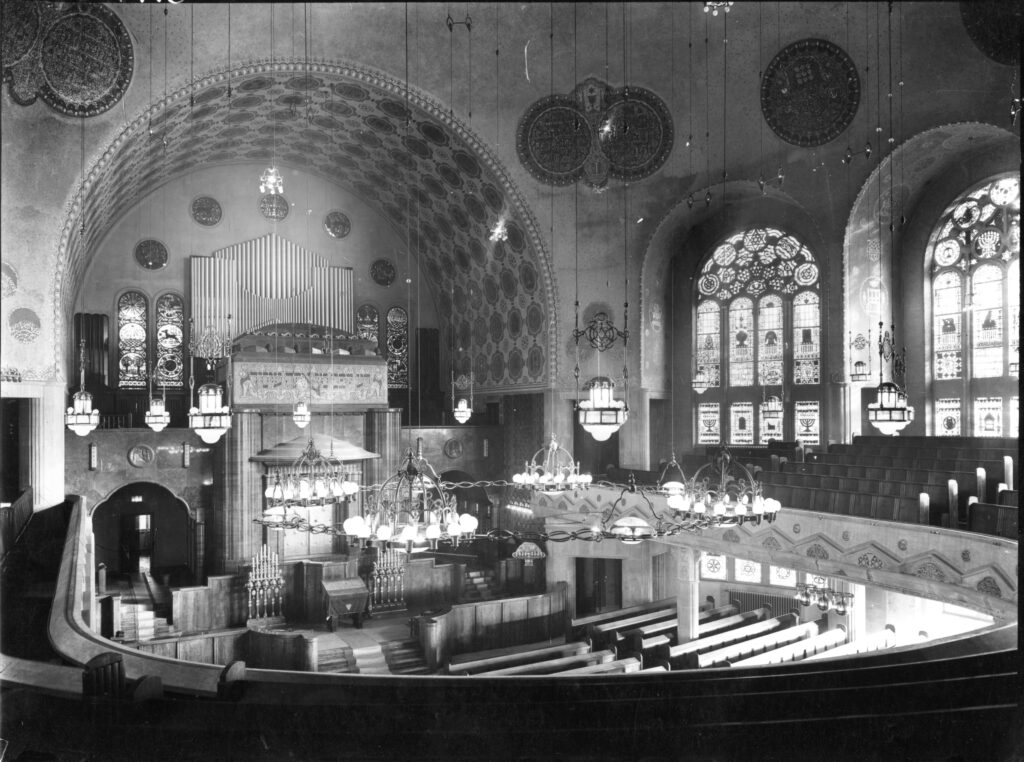In 1911, the architect Edmund Körner planned a representative new synagogue building that was intended to express the integration and recognition of Jews in Germany during the Second Empire.
Jewish families were already living in Essen in the Middle Ages, whereby their traces become lost in the sixteenth century. Jews lived continuously in the Rhineland, however, certainly since the tenth century. Around the time of the Thirty Years’ War (1618–48), Jews were permitted to live in Essen again, which was ruled by an abbess. Until well into the nineteenth century, this was a small community: In 1805, there were altogether nineteen families. After 1870, industrialization led to massive population growth. A synagogue built in 1808 became too small.
In 1913, a magnificent new synagogue was built east of the city center. Rabbi Samuel Salomon, a highly educated gentleman, designed the ornamentation of the synagogue based on finds in Palestine, which was then under Ottoman administration. Magnificent stained-glass windows and gold mosaics in the Byzantine style characterized its interior.

Timeline Essen
- ↑ Inauguration of the New Synagogue in Essen – September 25, 1913
